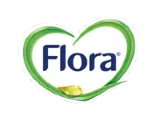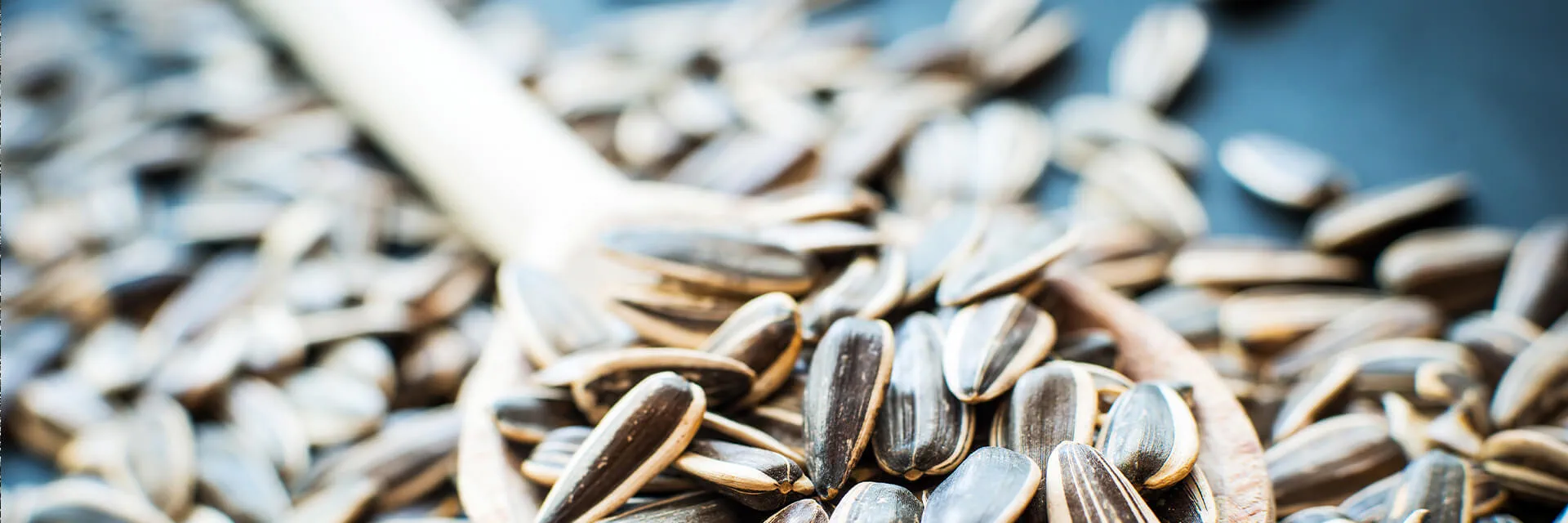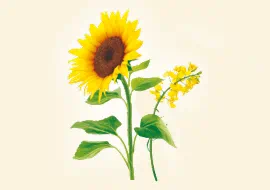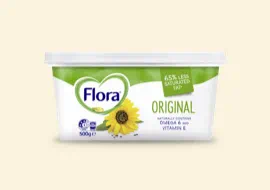The seed oils from sunflower and canola plants are blended together to make Flora spreads.
To learn more, please read on.
our favourite plants:
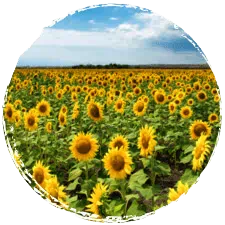
sunflowers
Sunflowers need a lot of sunlight for its proper growth. Therefore they grow best in locations with direct sunlight. They also have long roots and require loose and well draining soil to branch out.
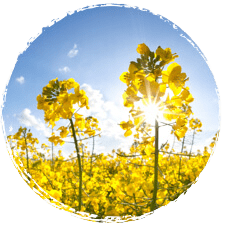
canola flowers
The Canola crop can be grown in wide varieties of soils however grows best in fertile soils. It is relatively easy to grow but requires more management and monitoring than cereal crops.
From Flower Seeds to Plant oil:
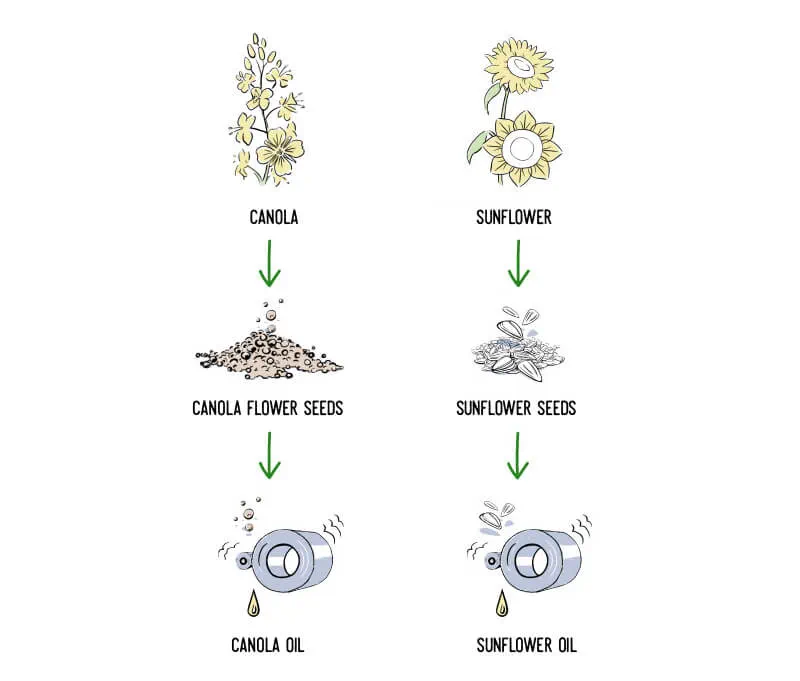
The seed oils from sunflower and canola plants are blended together to make Flora spreads.
The canola and sunflowers are harvested and then the seeds are separated from the flowers and prepared for pressing. The oils are released during the process of pressing and grinding the seeds. The remaining oils left in the grinded seeds are removed with a solution through what is called an extraction process. After the extraction, the solution used is removed from the vegetable oil by distilling the oil.
The next step is purification process, during which the oils are heated to about 200°C in a vacuum to prevent possible oxidation which affects the taste. To purify further and remove any residues after the extraction, the oil is put through another round of purification to guarantee the quality of the purified oils.
-
Do the oils lose their nutritional value during this process?
During the purification process, nutritional value is not affected as we only extract the impurities remaining in the oil post grinding.
-
Does Flora contains Trans fats?
There are negligible levels of trans fats (less than 1%) in Flora as compared to butter which has nearly 4-5 times higher levels of trans fats.
Just like saturated fats, trans fats are linked to increased cholesterol levels. It is best to replace these fats with unsaturated fats or, more preferably, polyunsaturated fatty acids such as Omega 6.
-
What is hydrogenation?
Hydrogenation is the process by which liquid oils are converted into solid fats. This process is well established and used all over the world to enable the use of plant oil in producing various products. Partial hydrogenation however, produces significant amount of trans fats. Flora moved away from partial hydrogenation many years ago.
Palm Oil: we always buy sustainable palm oil when available
Sunflower oil and canola oil are liquid at room temperature due to their mostly unsaturated composition. To make Flora a spreadable product, a limited amount of 'hard fat' is required. This hard fat gives Flora a firm, smooth structure, so that you can enjoy a tasty spread with the benefits of active ingredients such as Omega 6. Palm oil is used as a hard fat in Flora spreads and represents only 16% of the total oils.
We use segregated sustainable or mass balance palm oil in our products.

-
Is palm oil good for you?
Palm oil has lower saturated fat than butter and coconut oil, however it has relatively higher saturated fat than sunflower oil and canola oil. Experts recommend switching from saturated to unsaturated fat and Flora with 16% palm oil still contains 65% less saturated fat than butter.
-
Is it true that omega-6 is good for your health?
It is scientifically proven that omega 6 helps maintain normal cholesterol levels. International health authorities such as the World Health Organisation recommends up to 9% of total daily energy intake from omega 6.
-
Why does Flora not use an alternative to palm oil?
There is currently no equivalent alternative to palm oil. Palm oil provides sufficient firmness to make Flora spreadable and if we replace palm oil with other oils like soya oil, we only shift the problem. Organisations such as the World Wildlife Fund (WWF) therefore argue to use sustainable palm oil.
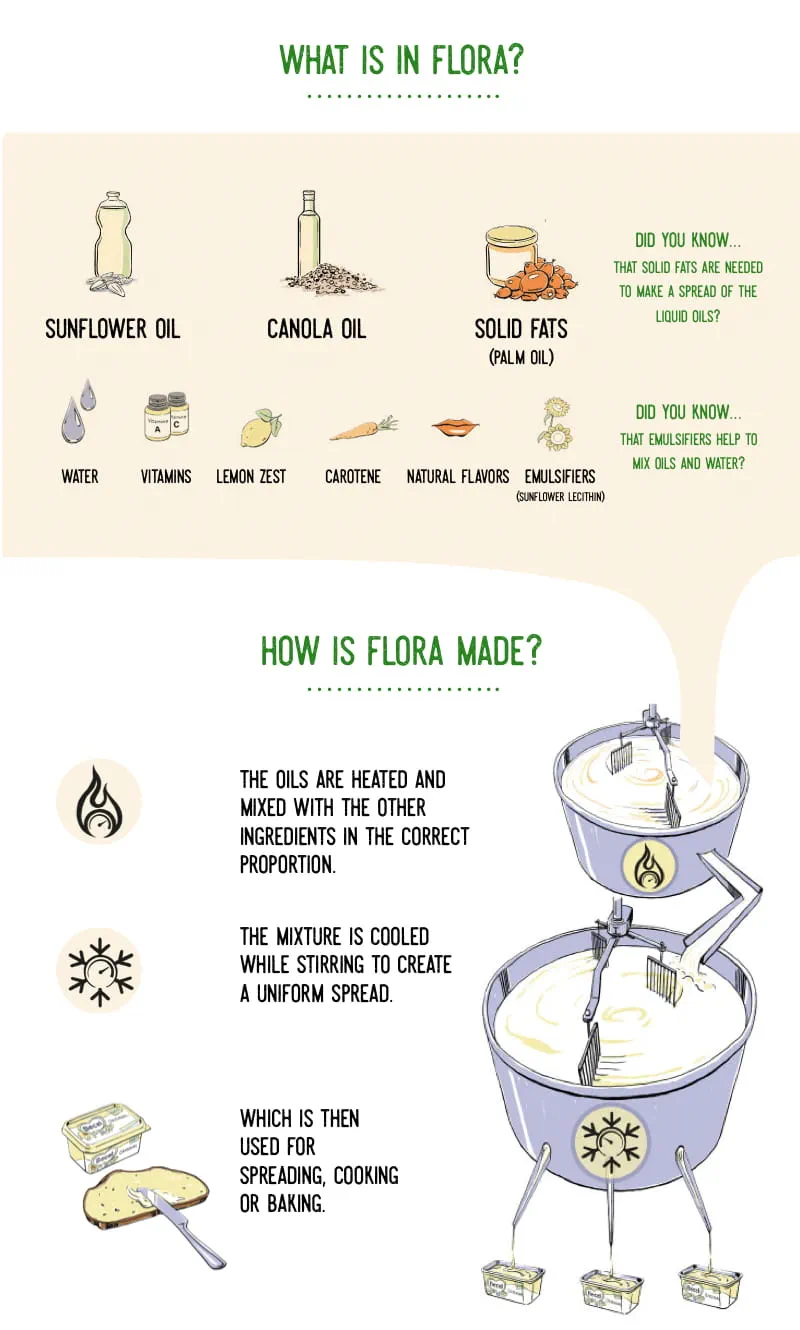
Once we have extracted the oil from the sunflowers and canola oil, we mix them in the factory with heated palm oil. By heating the palm oil a little it becomes liquid and can easily be mixed. We add a bit of citric acid to keep the oils fresh and to give a neutral taste. The recipe also has natural flavors for true Flora flavor, carotene for a beautiful color and vitamins.
In order to guarantee a responsible intake of fat per portion, the Flora Original recipe is partly based on water. Fat and water normally do not mix as easily and that is why we need sunflower lecithin to connect the two together.The mixing process is done at the factory in special cylinders that slowly let the oil mixture cool while it is being stirred, resulting in a beautifully smooth spread.
From these cylinders the spread is placed in tubs, all of which are covered with Cover leaf and a lid, ready to go to the store.
-
Has Flora looked into an alternative to plastic tubs?
We are aware that the amount of plastic produced around the world is problematic, therefore we use recyclable plastic for tubs and lids and are working towards fully degradable or compostable plastic. We are also looking at alternatives to plastic.
simple and delicious: make margarine yourself!
Did you know that you can easily make margarine yourself? By using a number of plant based ingredients you can put your homemade margarine on the table in no time. Tasty, natural and fun!
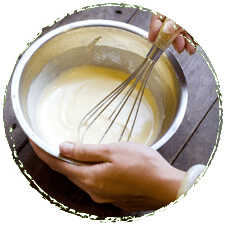
have a question?
We are proud of our products and want to be transparent about how these are made, that is why we have made every effort to make this website as complete as possible. If you feel there is still some information missing, please let us know.
